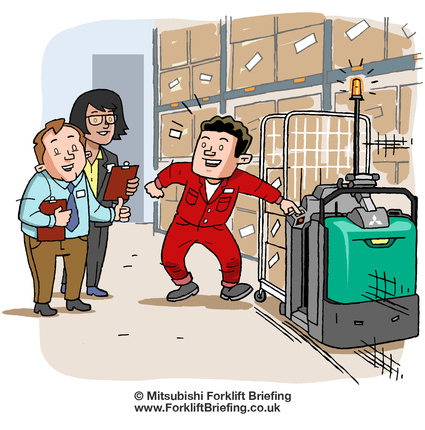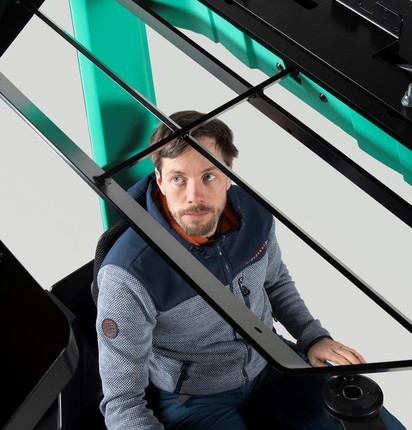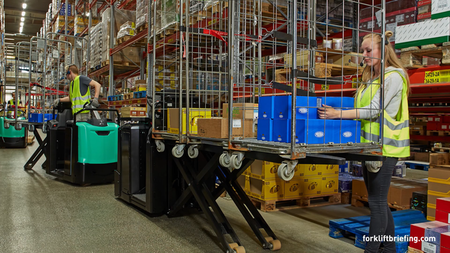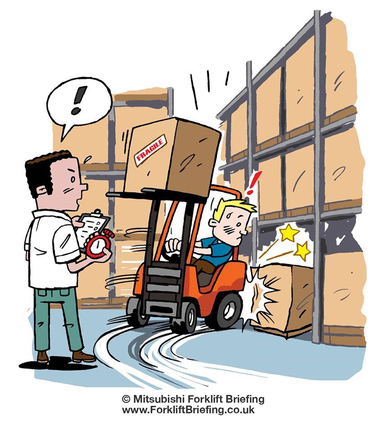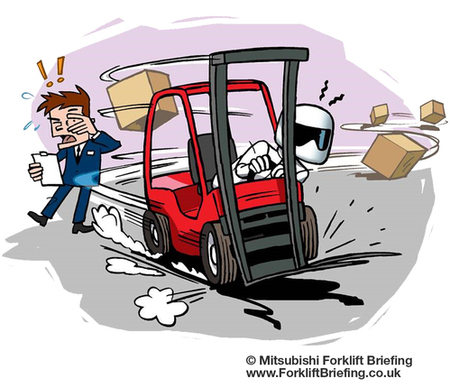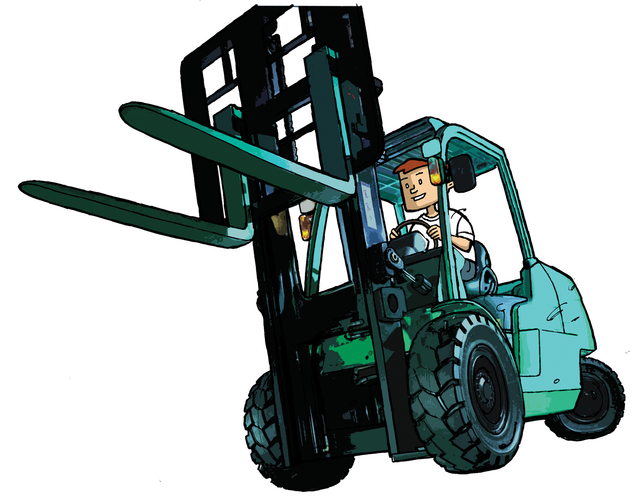
Drive up your productivity - not your costs
Watch your weight. If the total weight of the truck, including load, exceeds 10% on the rear axle, your operators can work with more confidence.
Interested in boosting productivity without having to invest in the most powerful and expensive equipment? Expert re searchers explain the crucial factors to look out for.
searchers explain the crucial factors to look out for.
Surely good acceleration and high top speeds are the deciding factors when it comes to high productivity in forklifts? Surprisingly, the answer is "no". That's the conclusion reached by an independent team of researchers from Buro Andersom, in the Netherlands, who have drawn upon 20 years of field testing to obtain their results.
Although power and speed are important, it appears they don't necessarily guarantee the best scores.
In fact, with electric forklift trucks in the 2.5 tonne category, a top speed of around 15km/hour is enough to give a decent score. With diesel trucks 17 km/hour is sufficient. Higher speeds only come into their own if the continuous driving distances are greater than 75 metres.
Average speeds also prove quite satisfactory when it comes to lifting and lowering. A fork speed of 45-50 cm/sec is perfectly adequate to achieve good productivity scores.
Predictability
So what does make the biggest difference? First and foremost comes general ease of operation. A truck that allows the driver to operate 'by feel', with barely any need to think, will automatically be a lot more productive.
Consistency comes next. If the truck always does exactly what the driver expects, productivity rises. In a 'predictable' truck, for example, there's no discernible pause between the operation of the levers and the working of the mast functions. The same goes for accuracy of fork position: a predictable truck responds quickly to the accelerator pedal and any change in driving direction.
Good weight distribution is another important factor. If the total weight of the truck, including load, exceeds 10% on the rear axle, then operators can work with more confidence - and more smoothly.
Comfort zone
A good, stable sitting position and a good view will help the driver feel comfortable, which... you've guessed it... also boosts productivity. A low centre of gravity and a stable driving line also ensure smoother journeys. Tyre quality plays a key role here. Ask your truck supplier to advise on the most appropriate kind of tyre for your application and your site. Factors to take into consideration will include the type and condition of the surfaces on which the truck will work (rough or smooth, level or bumpy, wet or dry etc) and the weight of the loads.
Our conclusion
If you want to drive productivity up, then predictability, consistency, comfort and stability are the name of the game. Contact an experienced and knowledgeable forklift dealer in your area for advice on the best trucks for your application, your drivers and your business.
- Action Points
- Assess current fleet performance
- Conduct site inspection
- Phone local forklift dealer

